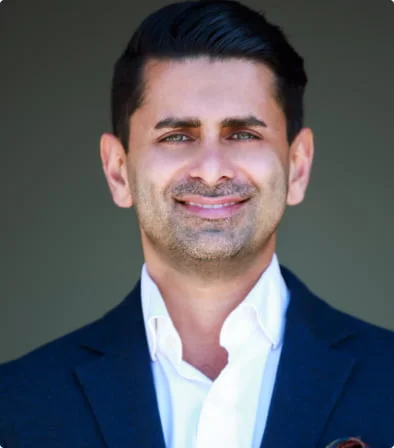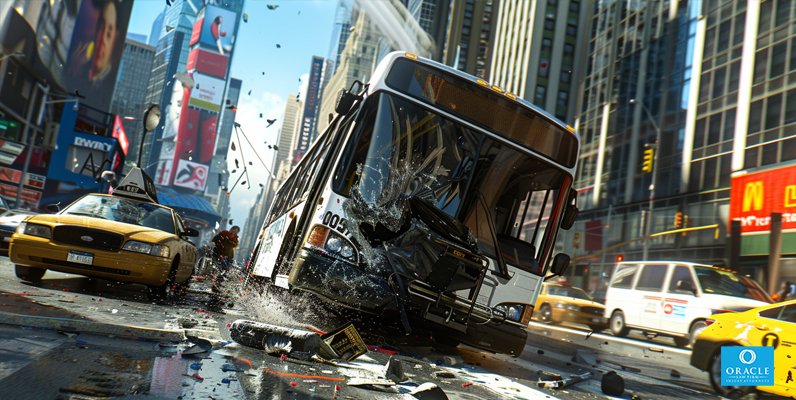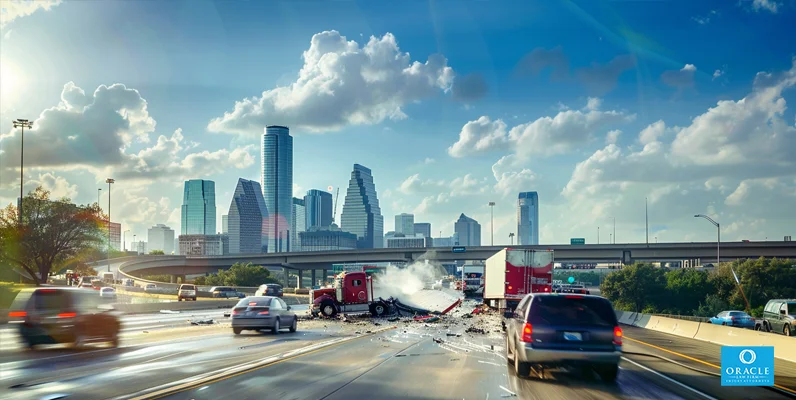Imagine this scenario: you lend your car to a friend for a quick errand, and they end up in a car accident in California. Suddenly, questions about insurance coverage and liability come rushing to your mind, including “what happens if someone else is driving my car and has an accident in California?” Who’s responsible for the damages? Will your insurance rates skyrocket? Understanding the complexities of auto insurance and liability when someone else is driving your car is crucial in such situations.
In this blog post, we will explore California’s auto insurance requirements, establish fault in car accidents, discuss liability when someone else drives your car, and offer tips on protecting yourself and your vehicle, all while answering the question: what happens if someone else is driving my car and has an accident in California? By the end, you’ll be well-equipped to handle any unexpected situations that may arise when lending or borrowing a car in California.
Key Takeaways
- California drivers must have a minimum of $5,000 property damage and $15,000/$30,000 bodily injury liability coverage.
- Fault in California car accidents is established based on evidence such as cell phone records and comparative negligence assigns fault to each party involved.
- To protect yourself from potential liability when someone else drives your vehicle it is important to understand insurance policies and only lend vehicles to licensed drivers with valid insurance.
California Auto Insurance Requirements
California law mandates drivers to possess auto insurance coverage, with minimum requirements including:
- At least $5,000 in property damage liability coverage
- At least $15,000 in bodily injury liability coverage for a single person
- At least $30,000 for a total accident
Despite not being legally mandated, underinsured/uninsured motorist coverage is highly recommended, particularly when someone else is driving your car. This type of coverage protects you in the event of an accident caused by an uninsured driver.
Grasping the details of your auto insurance policy, the coverage it offers and your duties as a car owner is necessary. Knowing your insurance coverage can help alleviate some of the stress and uncertainty that follow a car accident, especially when someone else is involved.
Establishing Fault in California Car Accidents
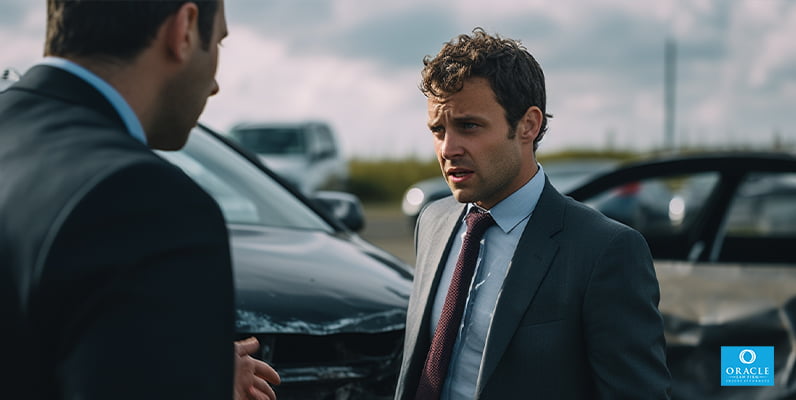
In California, the driver who caused the accident is responsible for damages. Establishing liability for damages can involve various types of evidence, such as cell phone records, traffic camera footage, and eyewitness testimony, depending on the person driving and the circumstances.
The fault rule in California implies that the at fault driver, who may also be the vehicle owner, is liable for any resulting damages if they were negligent in some way.
Comparative negligence
California follows a pure comparative negligence system, which means that each party involved in an accident can be assigned a percentage of fault, even if they were partially responsible. This principle affects the amount of damages awarded in personal injury claims and ensures a just allocation of fault in shared-fault accidents.
Under this system, even if a plaintiff is partially at fault for an accident, they can still recover damages. However, the amount will be reduced by their percentage of fault. For instance, if a driver is 80% at fault and the other driver is 20% at fault, the damages awarded will be reduced by the respective percentages of fault.
Liability When Someone Else Drives Your Car
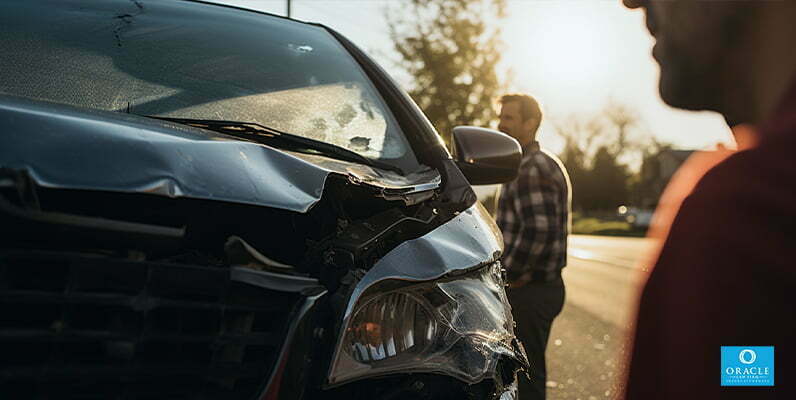
Liability for accidents involving another driver operating your car depends on whether the driver had permission to use the vehicle. When it comes to insurance coverage, policies in California typically follow the vehicle, meaning that your policy would cover damages even if someone else was driving your car. However, there are exceptions to this coverage, which we will discuss in the following subsections.
Permissive use
Permissive use refers to a situation where an individual who is not named on the policy or is not a household member is allowed to drive your car with your permission. If an accident occurs while the driver has your permission, your liability coverage will act as the primary coverage and cover damages up to your policy limit. In this scenario, the driver’s insurance would act as secondary coverage, covering the remaining damages until their policy limit is exhausted.
However, lending your car to someone else can increase your risk profile, potentially resulting in increased insurance rates even if you are not at fault for an accident. Furthermore, under the “negligent entrustment” exception, you may be held liable for allowing a negligent or unlicensed driver to operate your vehicle.
Non-permissive use
Non-permissive use occurs when a driver operates your vehicle without your permission. In this situation, your insurance company may decline coverage for any damages related to the accident. Furthermore, if the driver of your car was engaging in any illegal activities, such as driving under the influence or operating a vehicle without a valid driver’s license, you may be held liable for any damages incurred.
Only allowing responsible individuals with a valid driver’s license to borrow your vehicle is vital. This precaution can help protect you from potential legal and financial consequences in the event of a car accident.
Insurance Coverage for Borrowed Vehicles
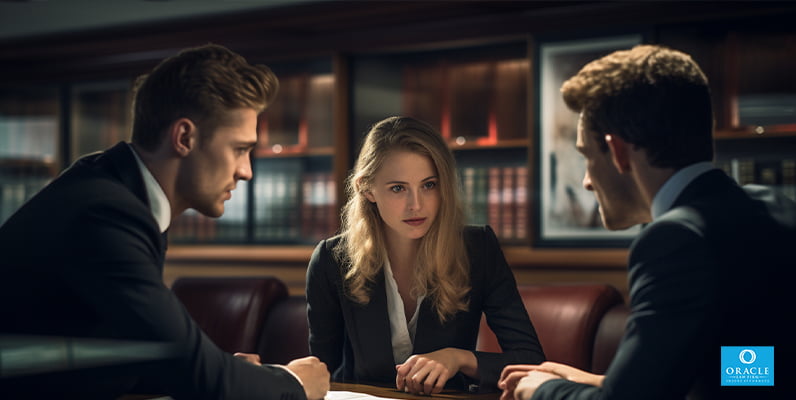
Insurance coverage for borrowed vehicles can vary depending on the specific policy. Comprehensive insurance coverage, for example, typically applies to borrowed vehicles, meaning that any damages or theft of the borrowed vehicle may be covered by the owner’s policy, up to the policy limits and terms. Liability insurance also generally covers accidents when a vehicle is borrowed, with the owner’s policy covering damages until its limit is reached and the borrower’s coverage acting as supplementary.
When you are considering lending your car or borrowing from someone else, reviewing both insurance plans for adequate protection is necessary. Understanding the details of the insurance policies can help prevent any unpleasant surprises in the event of an accident.
Effects on Insurance Rates and Claims

Accidents involving someone else driving your car can affect your insurance rates and claims, especially if you have had other recent accidents or a car crash. Insurance companies may opt to raise your rate, revoke your safe-driver discount, or even cancel your coverage depending on the circumstances. If your car was loaned to another individual and they caused the accident, the other driver would file a claim against your insurance policy, which could result in an increase in your premium rate.
In California, the impact of an accident involving a borrowed vehicle on your insurance rates can persist for three to five years, varying with the insurance company and state rules. With this knowledge, it’s important to think about the potential long-term financial effects of lending your vehicle.
Steps to Take After an Accident Involving Your Car

Following an accident involving your vehicle, taking the necessary measures to safeguard your interests is vital. This includes contacting a car accident lawyer, understanding your insurance policy, and officially reporting the accident. A car accident lawyer can assist in determining the evidence necessary to prove fault for the accident, potentially lowering liability and helping to secure compensation for any damages.
They can also help you navigate the complexities of the personal injury claim and insurance claim process, ensuring you receive the compensation you deserve for your medical bills.
Contacting a car accident lawyer
A car accident lawyer can help you in the following ways:
- Seek compensation for damages
- Protect your rights against insurance companies
- Provide representation in discussions and meetings with the insurance company’s lawyers
- Utilize their legal knowledge to advocate for your rights
- Pursue a fair settlement that covers your damages and losses
Should you be unsure about your legal alternatives or worried about the consequences of the borrower’s actions, consulting with a lawyer at the earliest to assess your situation is recommended.
Understanding your insurance policy
Understanding your insurance policy will help you know what damages are covered and who is included or excluded from coverage. In California, all drivers must demonstrate financial responsibility for any vehicles they own, fulfilled by having car insurance that provides coverage for any injury or damage to other people’s property.
To determine the coverage provided in your car insurance policy in California, please refer to your policy documents. These documents will provide information on:
- The coverage types
- The limits
- The deductibles
- Any additional benefits or exclusions
If you require further clarification, please contact your insurance provider.
Officially reporting the accident
Reporting the accident officially involves contacting the police and providing necessary documentation, such as photos of the accident scene, injuries, and property damage, as well as witness statements. Photographic evidence is of great importance when officially reporting a car accident in California, as it can provide visual documentation of the accident scene, damages, injuries, and other elements that may have contributed to the accident.
In addition to filing a police report, you may also need to submit an SR-1 report to the California Department of Motor Vehicles (DMV) within 10 days if someone is injured in the accident. An SR-1 report requires information such as the time, date, and location of the accident, as well as the names and contact information of all parties involved.
Dealing with Unlicensed or Negligent Drivers
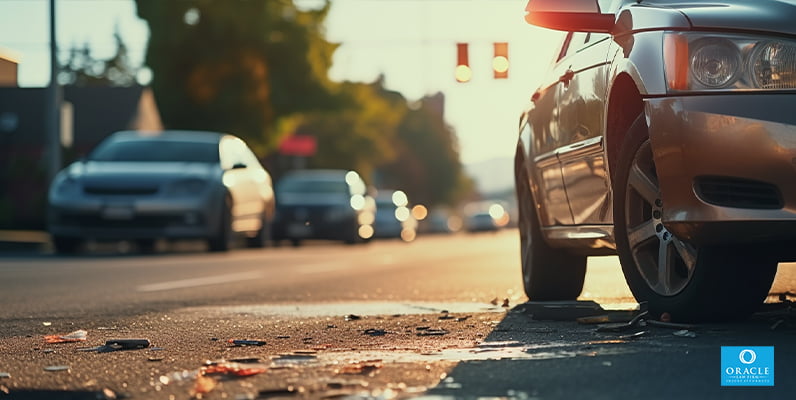
If you lend your car to an unlicensed or negligent driver, you may be held partially liable for any accidents that occur. Under California law, it is illegal for the owner of a vehicle to knowingly permit an unlicensed driver to operate the vehicle. Should an accident occur as a result of the unlicensed driver, the owner of the vehicle may be held responsible for any damages or injuries caused.
To steer clear of possible liability, ensure your vehicle is only borrowed by responsible individuals holding a valid driver’s license. Verifying their driving history and ensuring they have car insurance in place can help protect you from legal and financial consequences in the event of an accident.
Protecting Yourself and Your Vehicle

For your and your vehicle’s protection, gaining a deep understanding of your insurance policy and lending your car solely to responsible drivers is crucial. If your family members or close friends frequently use your car, consider adding them to your insurance policy to prevent the risk of incurring a large expense if your insurance company denies your claim due to the driver. Keep in mind that adding a regular driver to your insurance policy in California can impact your insurance rates, either raising or decreasing them depending on the driver’s profile.
By taking these precautionary measures, you can ensure you’re prepared for any unforeseen circumstances that may arise when lending or borrowing a car in California. It’s best to be proactive in understanding your insurance policy and the potential legal and financial consequences of lending your vehicle to others.
Summary
In summary, understanding the complexities of auto insurance and liability when someone else is driving your car in California is crucial for protecting yourself and your vehicle. By knowing the state’s auto insurance requirements, establishing fault in car accidents, and comprehending liability when someone else drives your car, you can be well-equipped to handle any unexpected situations that may arise when lending or borrowing a car.
Remember to review insurance policies before lending or borrowing a car, ensure you only lend your vehicle to responsible drivers, and consider adding regular drivers to your insurance policy. By taking these steps, you can minimize potential legal and financial consequences, safeguarding both your vehicle and your peace of mind.
Frequently Asked Questions
Can someone drive my car if they are not on my insurance in California?
Unfortunately, the person driving your car in California must be included on your insurance policy in order to legally drive. Therefore, they cannot drive your car without being added to your insurance first.
What if my boyfriend drives my car and has an accident?
If your boyfriend causes an accident while driving your car, his insurance may cover the costs if he is not at fault. If he is at fault, your car insurance will likely take responsibility for damages.
What are 3 things you should do before lending your car to a friend or family member?
Before lending your car to a family member or friend, make sure they have a valid driver’s license, that you have checked their driving history and abilities, and that you have copies of the registration and insurance policy located in the car.
What are the minimum auto insurance requirements in California?
In California, you need to have at least $5,000 of property damage liability coverage and at least $15,000/$30,000 of bodily injury liability coverage to meet the minimum auto insurance requirements.
What is comparative negligence in California car accidents?
Comparative negligence is a legal principle used to assign fault and damages in California car accidents. It follows a pure comparative negligence system, meaning each party is assigned a percentage of the fault.

